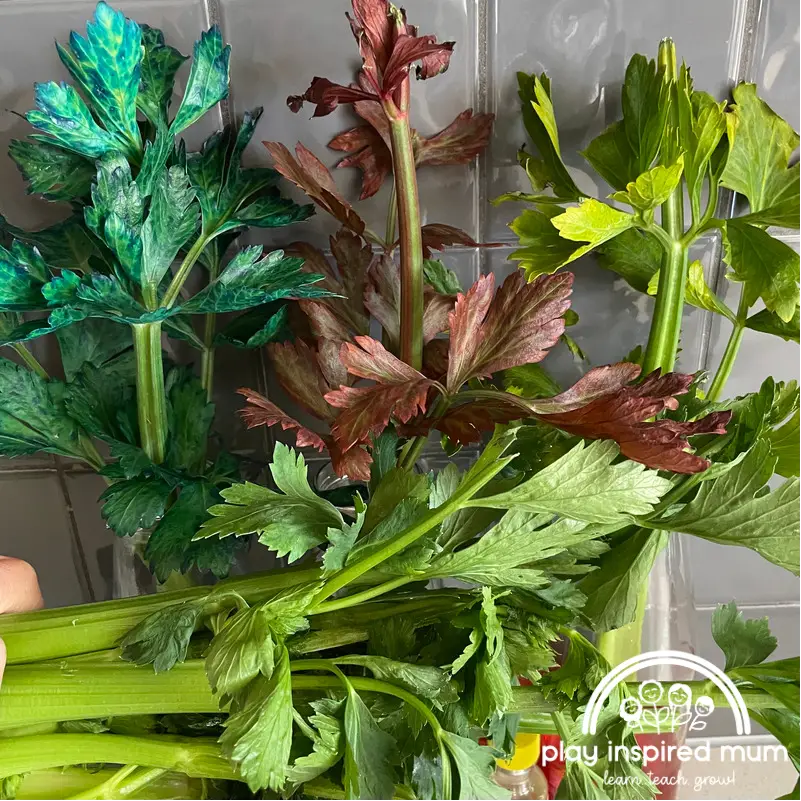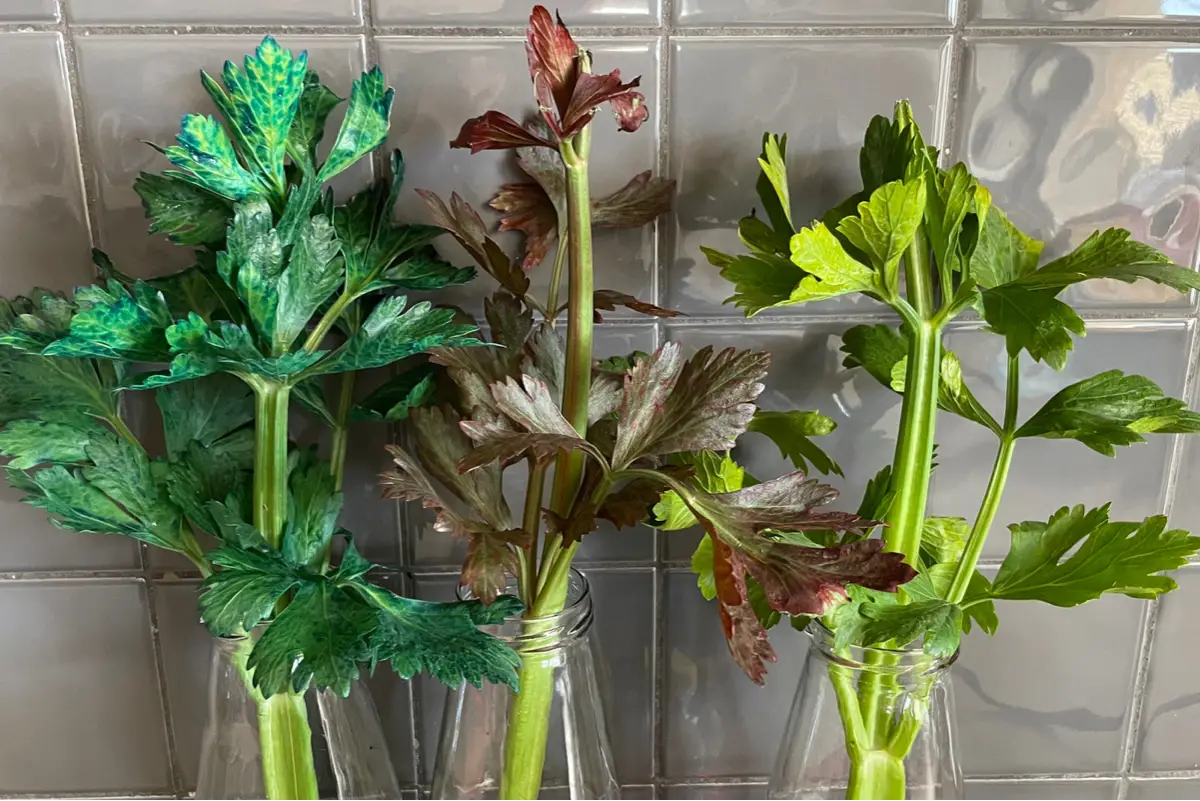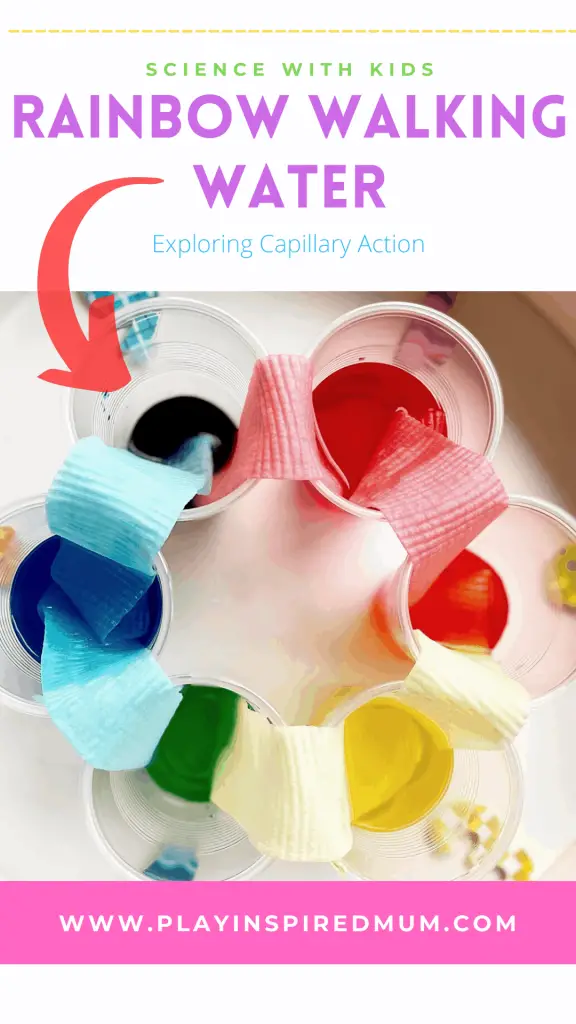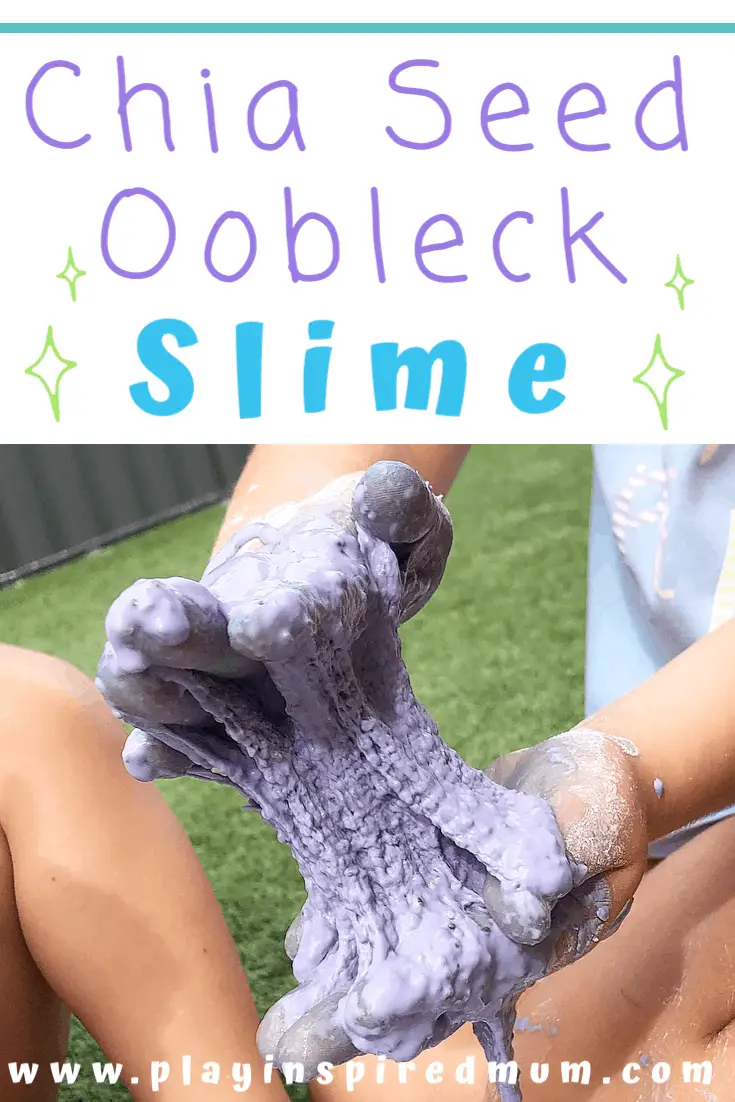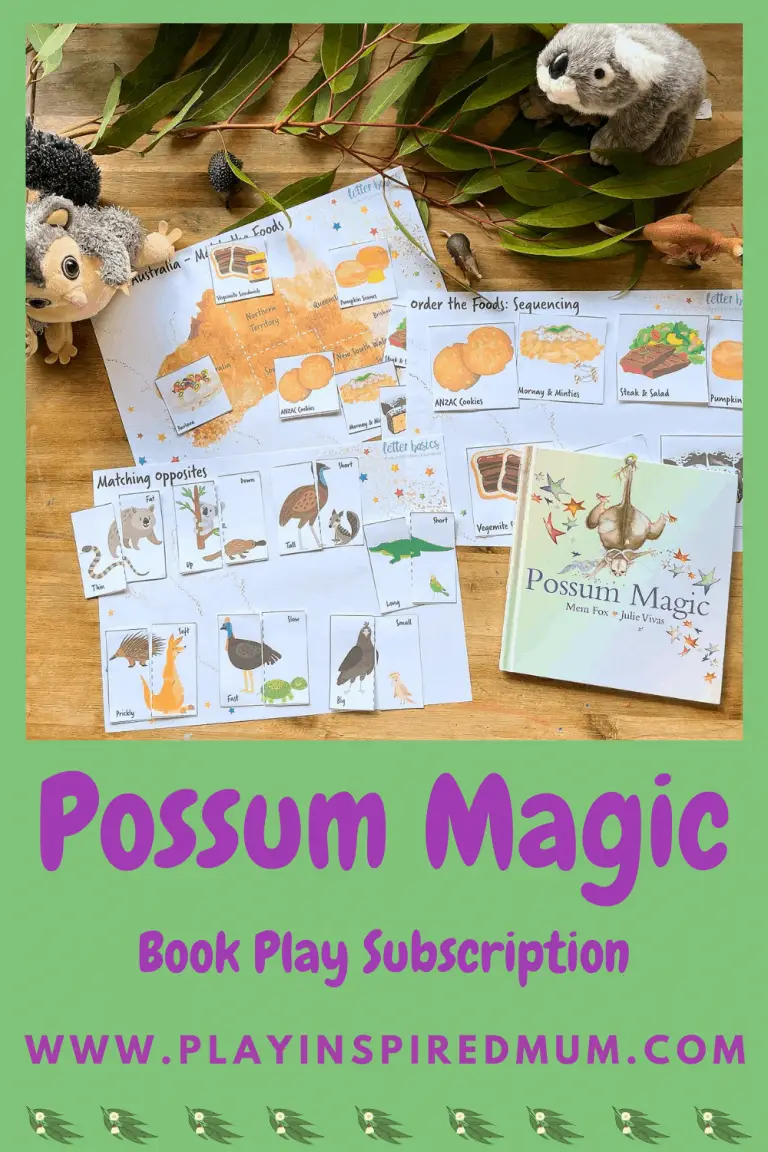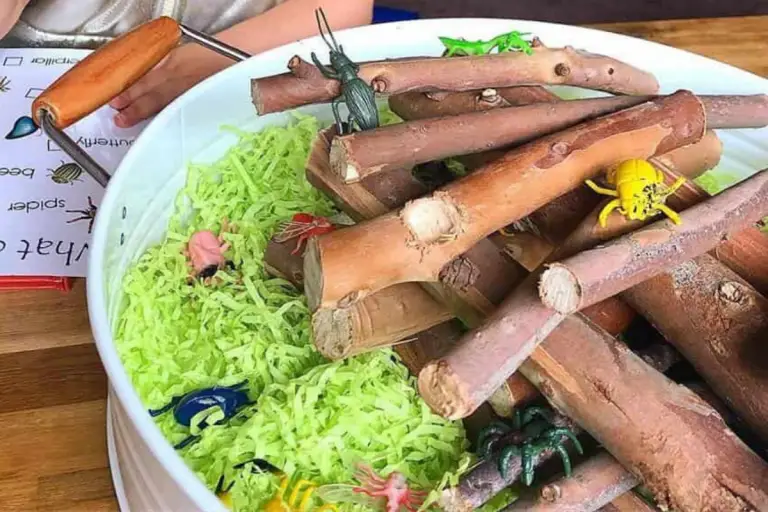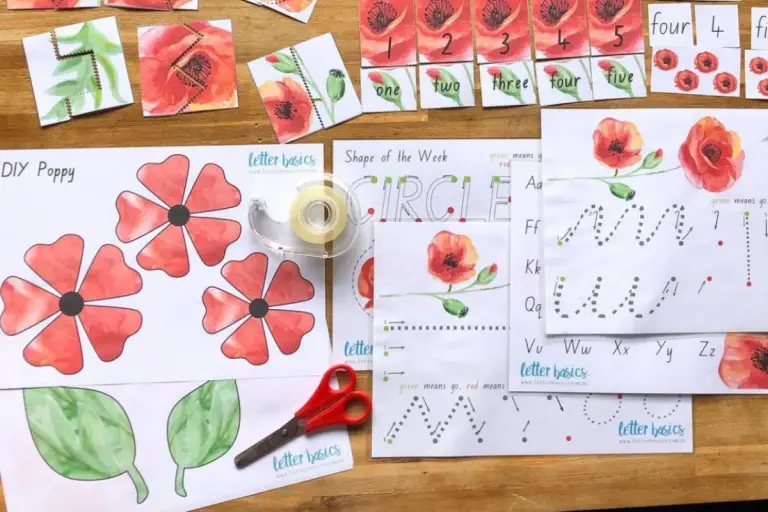Coloured Celery Science Experiment
Disclosure: This blog contains affiliate links which I may earn a small commission from if you purchase through them, at no extra cost to you.
Learn about capillary action with this simple coloured celery science experiment!
This is a simple, bright and colourful science experiment that offers plenty of visual stimulus for your budding scientist. The coloured celery science experiment is quick and easy to set up and opens up lots of opportunities to learn.
Call it magic or be blown away by the science behind the action. Regardless, the end result is well worth the wait!
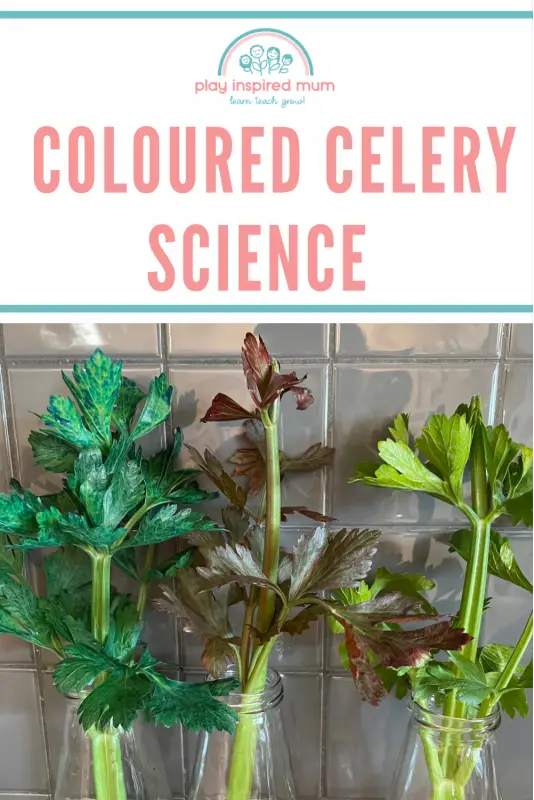
Coloured Celery Science Experiment
How do plants get their water?
How does the water travel inside the plant?
Answer these questions and open up so many more with this fun science experiment for kids.
Discover how water moves within a plant and literally see the action!
Creating rainbow celery is easy and demonstrates so many scientific concepts. This kid safe science experiment can be repeated over and over as your child grows. Different concepts appeal to different age children.
Creating the rainbow leaves never gets old.
What you need for a coloured celery science experiment
- Fresh celery with leaves
- Water
- Food colouring
- Jars or cups
This experiment needs fresh celery. The fresher, the better! Look for bright leaves that still have lots of volume and integrity.
Consider the length of the celery and the size of your jar. If using longer lengths of celery, all larger jar would be more appropriate. Otherwise, your experiment will be top heavy and topple over.
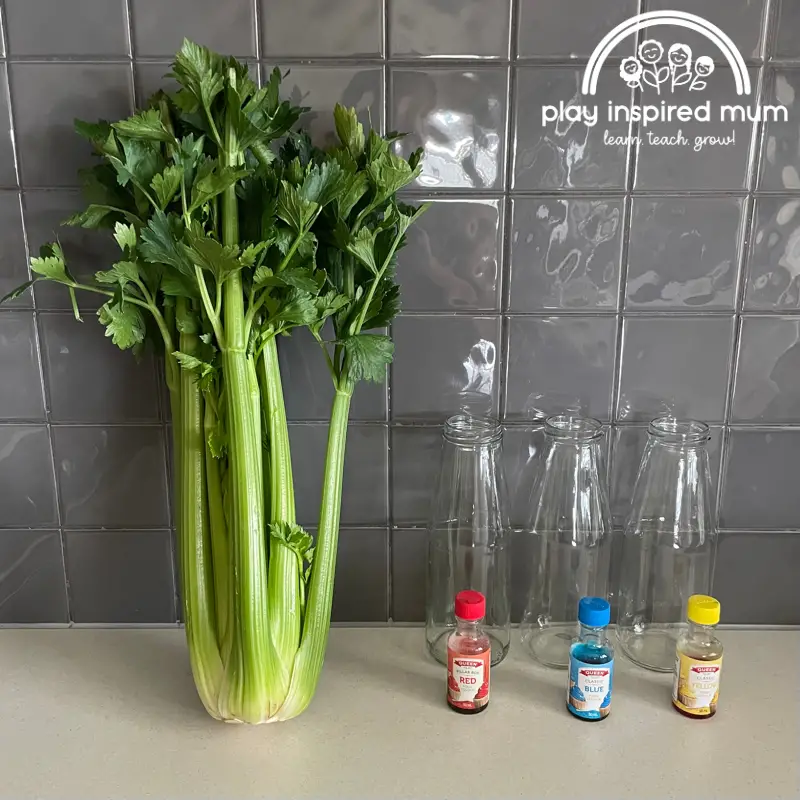
How to set up your coloured celery science experiment
- Add enough water into the jar to support the celery stick
- Add food colouring to the water. Be generous here. It result in a stronger result.
- Inspect the celery, making some observations. Consider inspecting the leaves, stems and the cross section of the stems.
- Make some predictions. What does your child think will happen?
- Cut the celery stalks from the heart
- Position the celery stalks into the jars of coloured water
- Save the celery heart from another science project
- Observe the process incrementally. Check after 10 minutes, making observations. From here check each hour, few hours, next morning and the day after. We had left this experiment on our kitchen bench for the better part of a weekend.
The kids loved watching the colours show. The change was so faint to start with. However, come the final hour, placing a fresh, uncoloured celery stalk next to the coloured stalks showed the huge difference. Even the yellow was clearly distinguishable.
Oh and the second experiment with the celery heart?
Simply position the heart over some water in a vessel.
Just the base needs to be in the water.
The celery will regrow!
The celery regrows rather quickly too. Your children’s patience will be rewarded after a week or so depending on environmental factors.
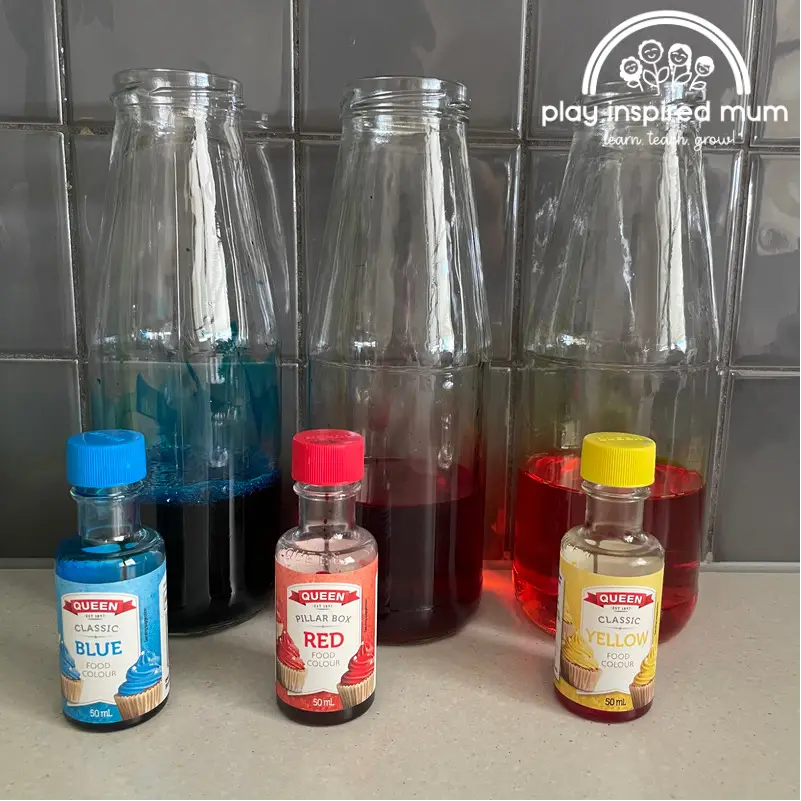
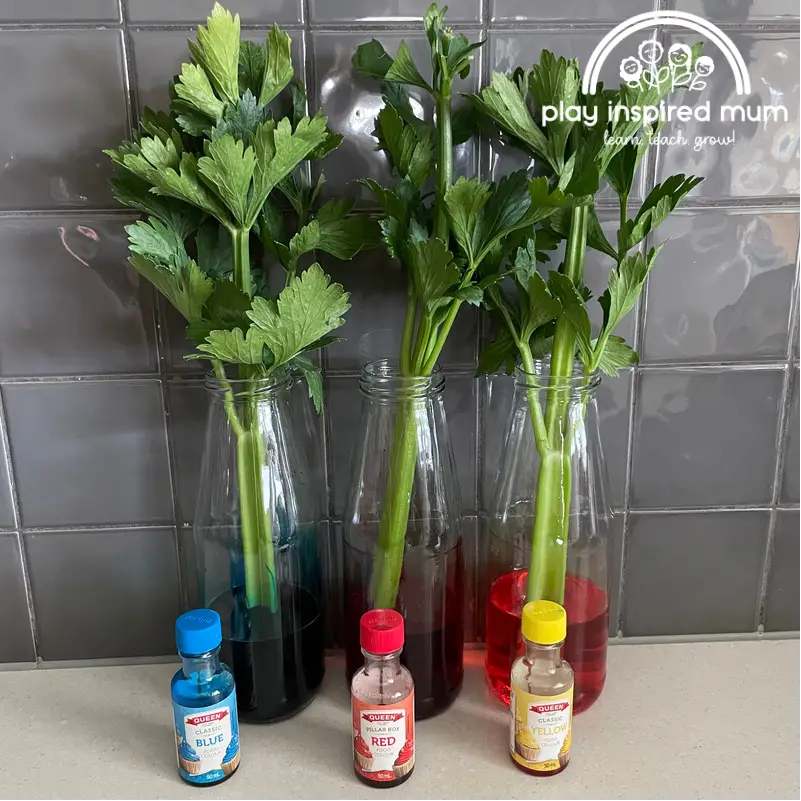
What happens when you put celery into food colouring?
When you put fresh celery into food colouring, the food colouring will travel through tiny tubes called xylem.
The xylem typically transport water from the roots of the plant to up and outwards via a process called capillary action.
The coloured water droplets clings to the narrow xylem tubes running up the stalk of the celery. However, the droplets also cling to themselves, resulting in the coloured water rising up through the xylem.
What is capillary action?
Water is able to travel up the xylem via the relationship between the cohesion of the coloured water molecules and the adhesive forces between the liquid molecules and the conduit material.
This way that liquids moves within small tubes is called capillary action.
Water droplets stick to the sides of the tubes, the same way that it sticks to a toy after washing it.
The water droplets also stick to themselves.
When within a tiny vessel, the water droplets move by sticking to the walls of the space and themselves, pulling themselves upwards.
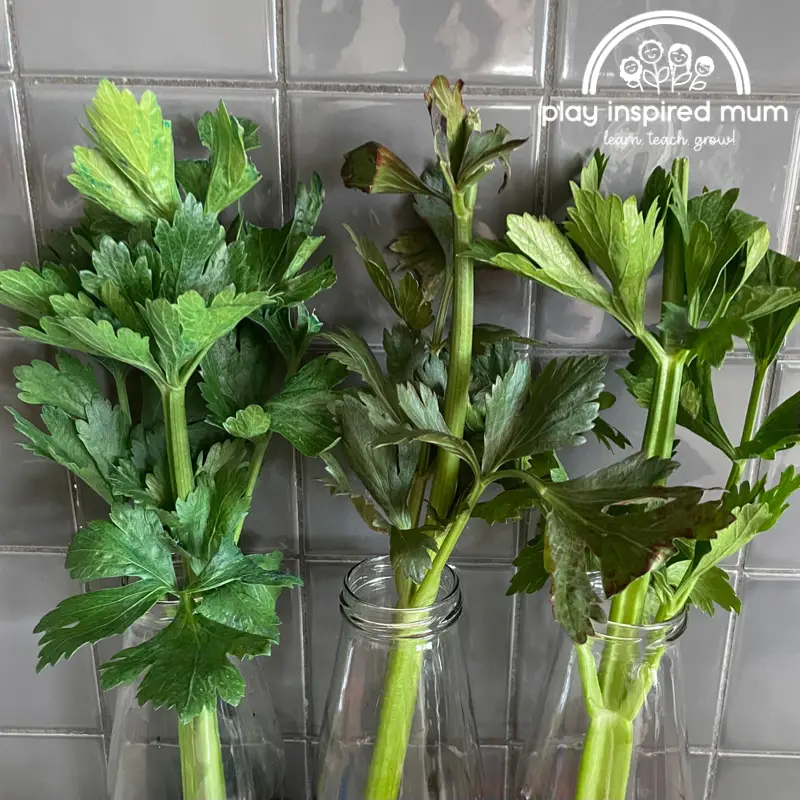
Does celery absorb food colouring?
The coloured water travels inside the celery stalk by a process called capillary action. The coloured water is drawn up the tiny tubes within the celery stalks via capillary action.
It demonstrates how plants draw up water and nutrient from the roots, up the stems to the leaves.
The food colouring shows where the water and nutrients are dispersed within the plant.
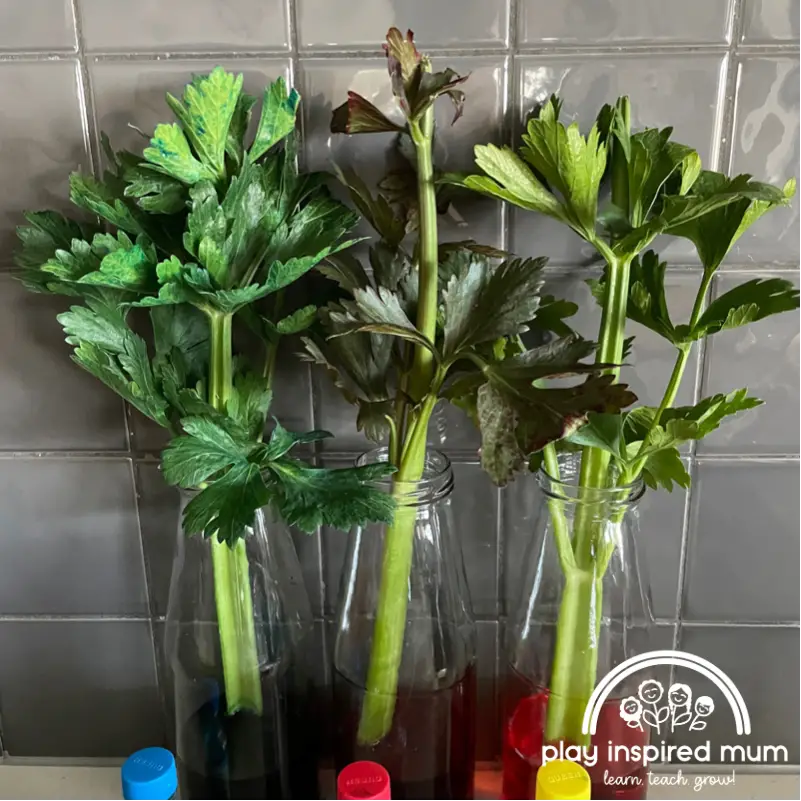
Why does celery soak up food colouring?
The celery pulls up the water by the process called transpiration.
That is the water drawn up from the ground to the plants leaves, where the excess water evaporates.
The plant is able to move water by using capillary action.
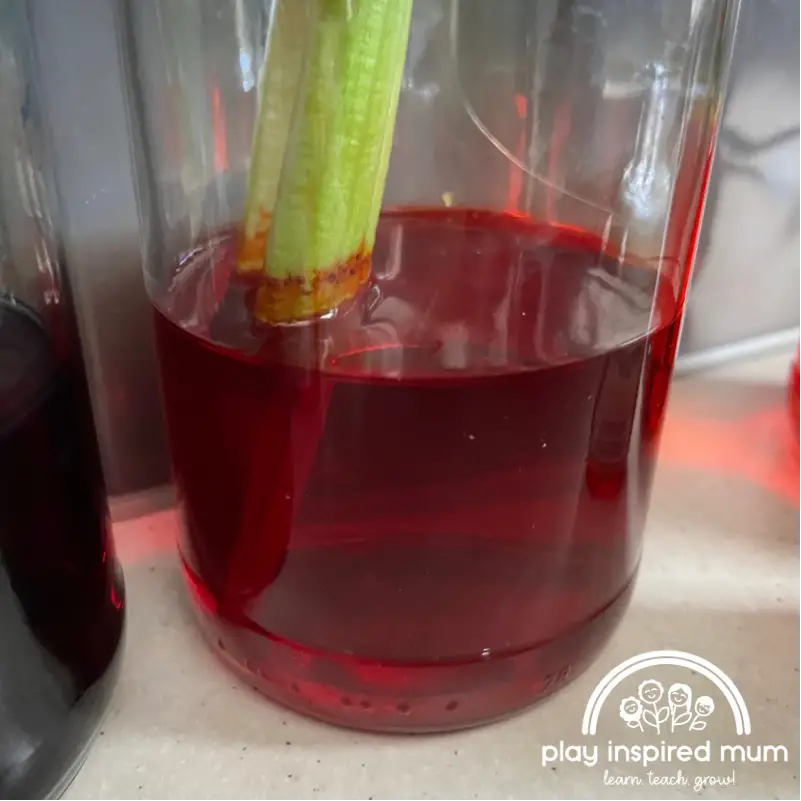
How long do you leave the celery stalks in the coloured water before seeing the result?
The celery leaves and stems will begin to take on the colour of the coloured water within about 20 minutes. For best results, leave the celery over night or even the weekend for a full display of colour.
Taking photos can be a useful way of integrating technology to record results to make comparisons over a time period.
These could reprinted and sequenced to show the intensity of the colour growing.
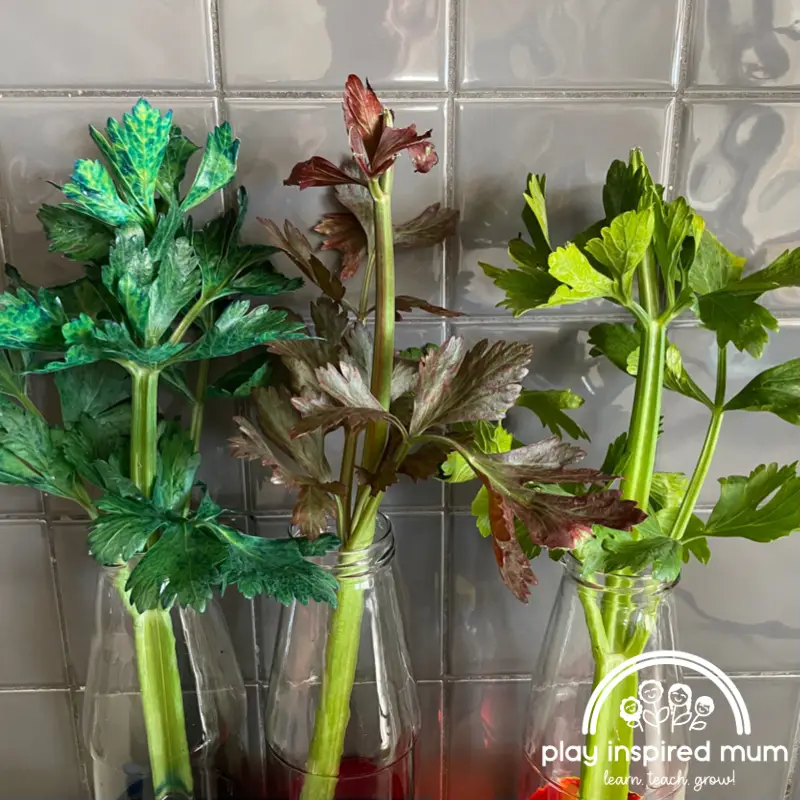
What is the result of the coloured celery experiment?
Over time, the tubes within the celery stalks and leaves will take on the colour of the food colouring.
The coloured water works its way through the tubes and leaves resulting in beautiful colouration of the foliage.
This experiment demonstrates how water travels through the plant, just as nature intended.
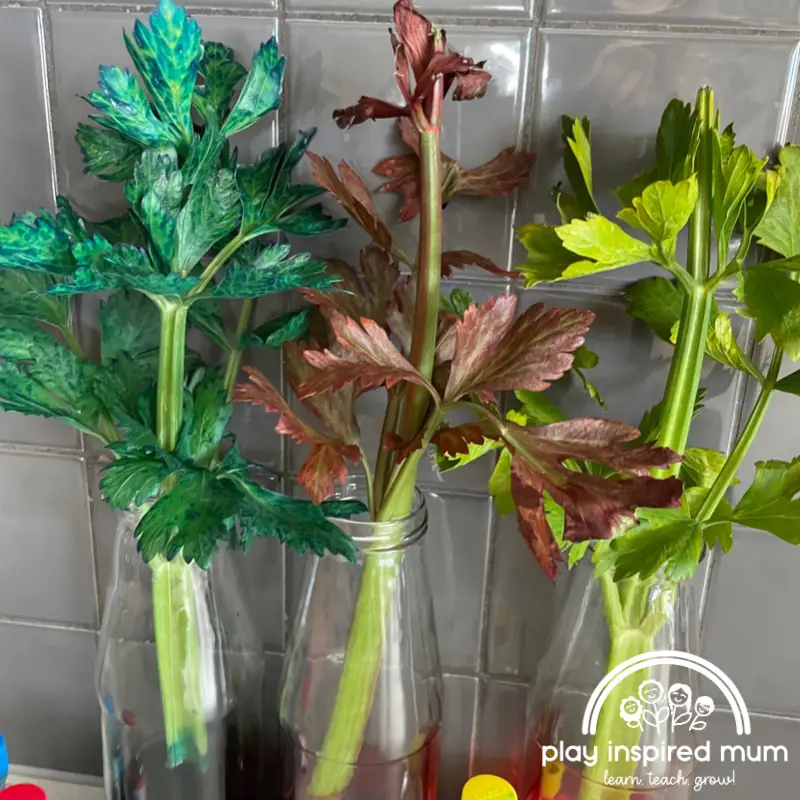
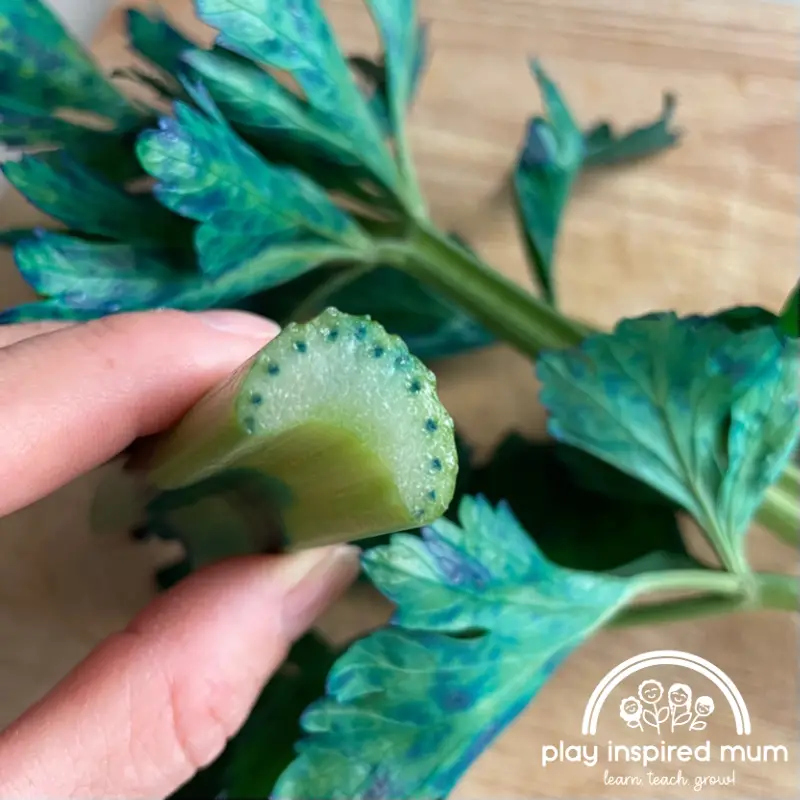
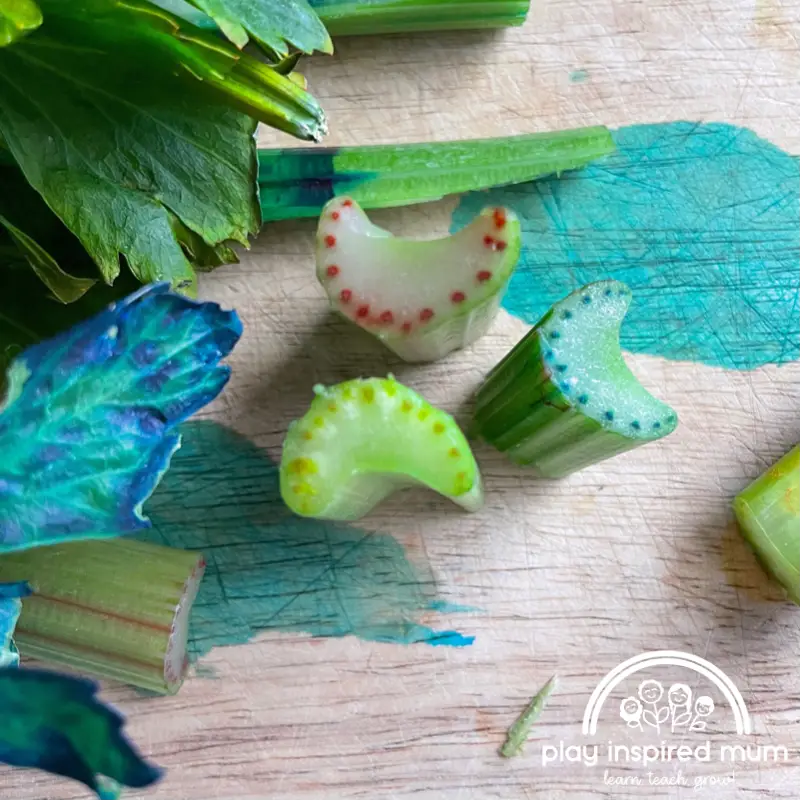
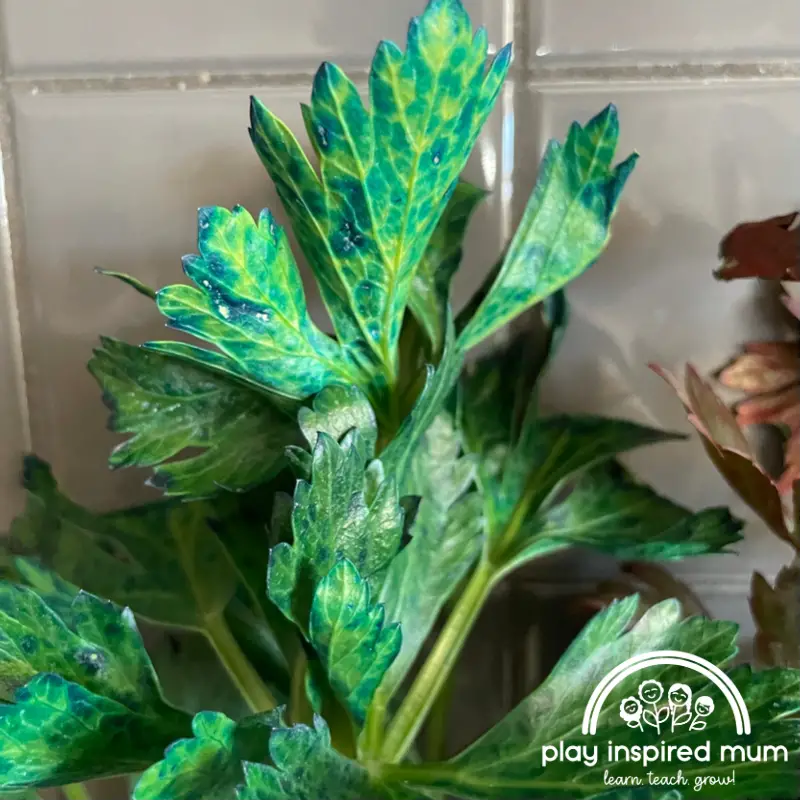
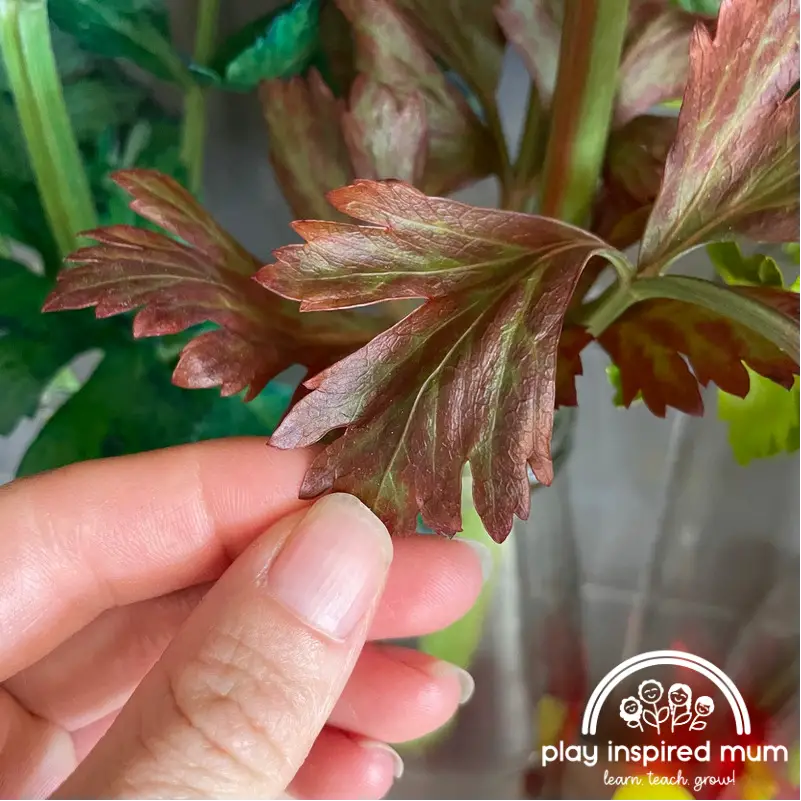
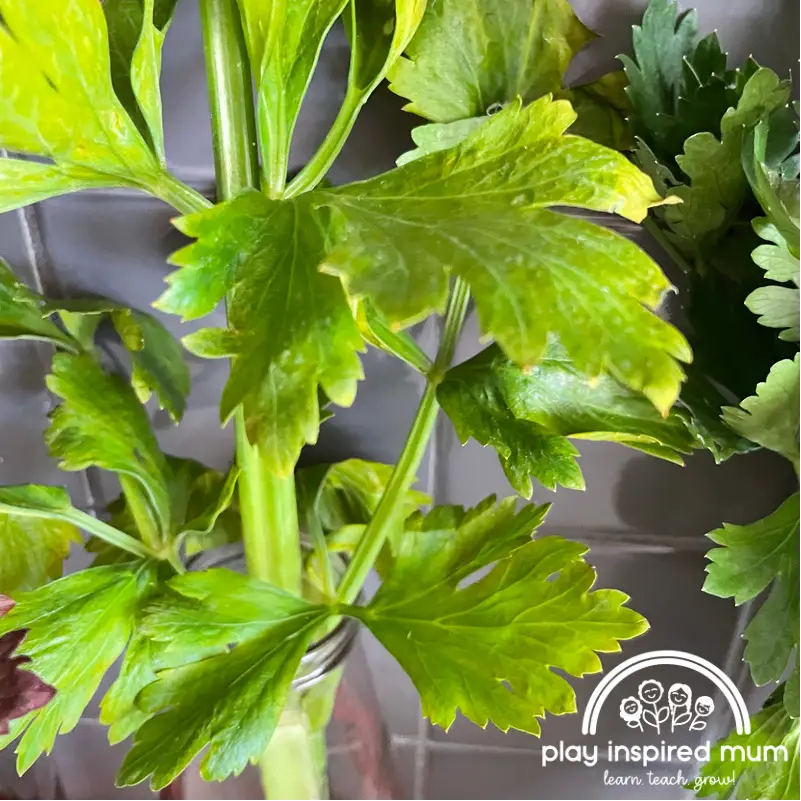
Learning Opportunities
This is a great experiment to do with even younger children.
Children are able to make predications, observations and reflections which encourages critical thinking and higher order thinking.
Other life skills your child can refine while completing this experiment include
- Problem solving
- Logical thinking
- Cause and effect
- Object permanence
- Sequencing events
- Following oral instructions
Creating rainbow celery is a fun way to learn about how water is moved within plants.
The simplicity of the experiment means that even younger children can be involved in setting up. Including children in the process allows them to be more invested in the outcome. In turn, this hands on experience opens up more opportunities for learning!
Learning through play – it’s so much more than having fun!
